Future City at Freie Schule Pankow (Berlin)
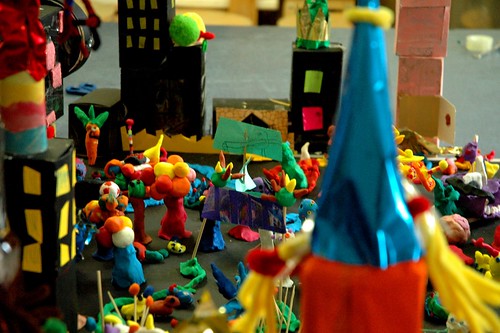
From November 2 – 6 we had a project called “Future City”
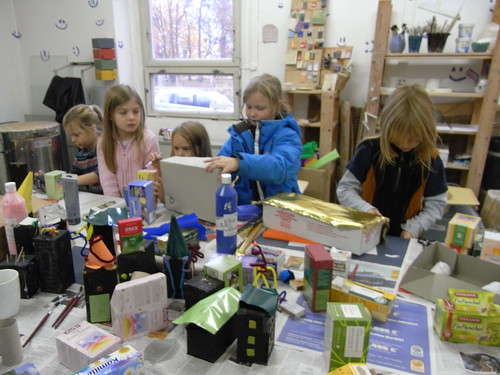
with six kids: Emma, Johanna, Joanna, Fee, Benjamin, Katerina and Mereet.

The aim of the project was to build together an imaginary city. In the process of doing that, we learned about the history of urban development and the differing concepts of maps and plans of a city. We watched movies and looked through a variety of visual materials — books, photographs of the history of architecture, maps, and medieval and contemporary plans and drawings of cities. All the movies and pictures we looked at will be on the web shortly, so you can look through them with your kids together.

At the beginning of the project each child got a book where s/he drew her own version of the “ideal city plan”. It was interesting to see that most of the kids understood (and drew) the city like their own private space. The whole city meant for them their own apartment and just a little bit around it (maybe a park or a garden, but mostly like an extension of their own private space).
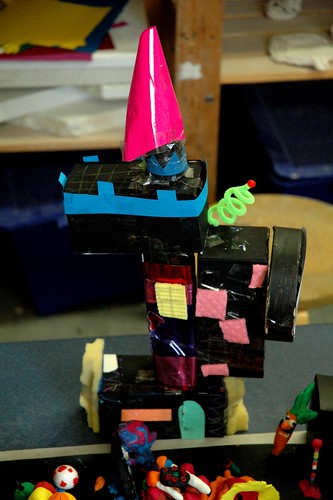
Proceeding from these plans, we alternated working on the big group city model, building houses and roads, and returning to work on our individual books.

Just before we finished work on the big city, we held a book presentation. The kids were not shy or afraid to give their presentations. Every one was very happy to share their ideas with others. Kids were surprisingly articulate in their presentations, very confident in their ability to deliver a message. I was amazed by the respect that they showed to each other. This is clearly an advantage of the free school approach.
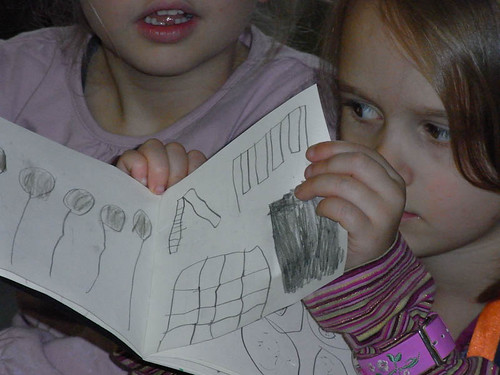
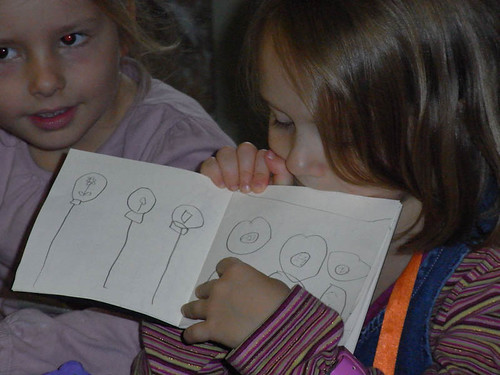

Katerina was thinking through many details, even electricity.
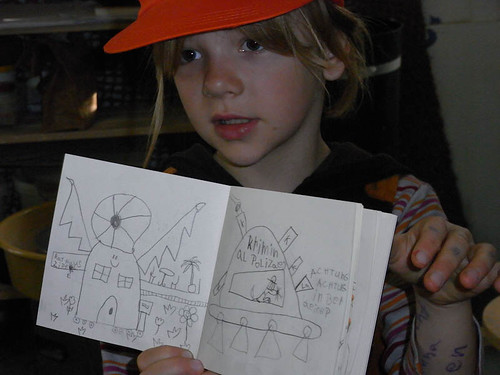
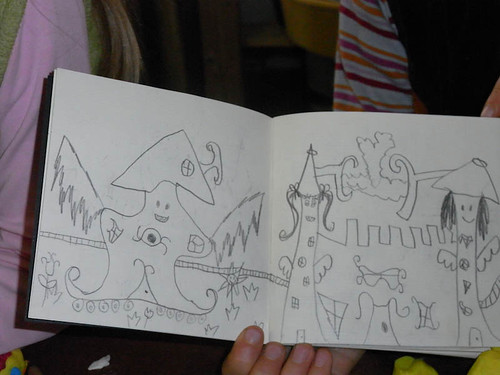
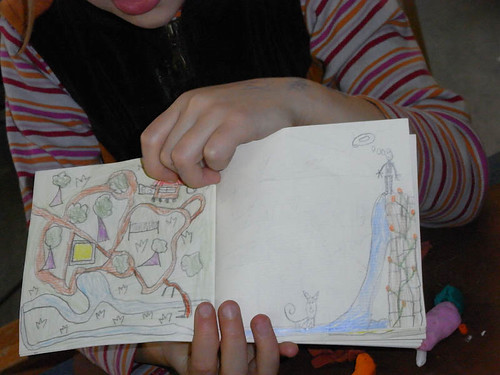
Johanna created a very detailed map of the whole city.
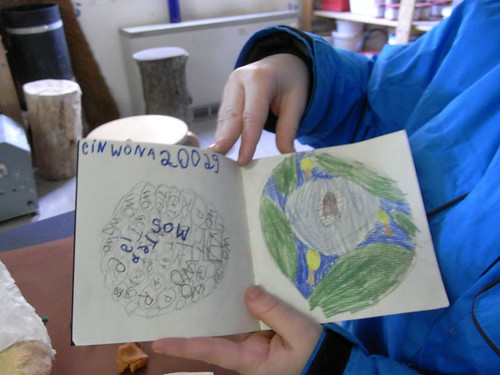
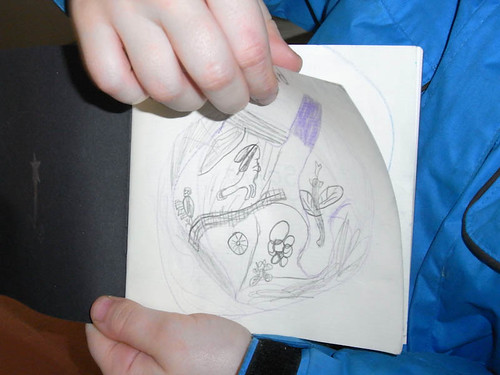

Joanna invented some sort of linguistic map, using letters to name different parts of the city.
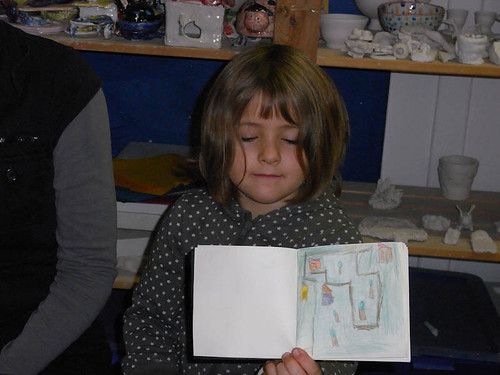

Fee created a city that would be mostly private. I imagine that if she would have more time to work on her book, she would develop the whole city inside her apartment, adding more and more elaborate details.
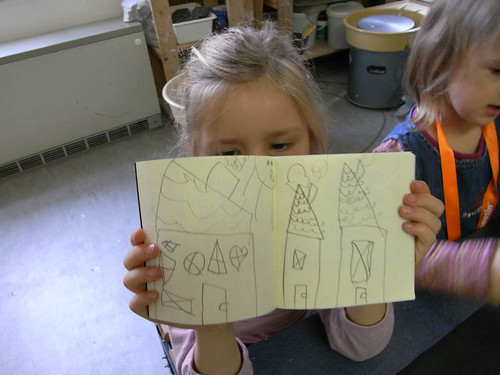
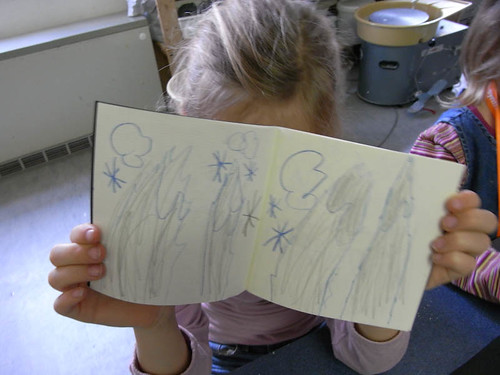
Mereet created a great metaphor for the city: the train. The city-train stopped at different stations, each of them being a vital city service like playground or park. And each stop was a book page. I think this is also a great idea for a children’s book.
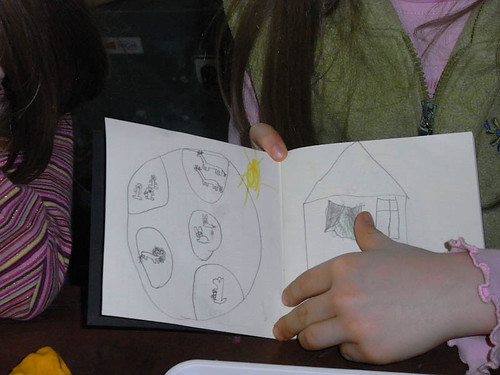
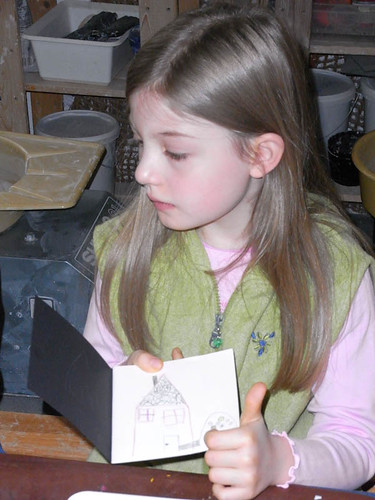
For Emma, the city is her family. She drew the last page with a small picture showing a child and a parent.
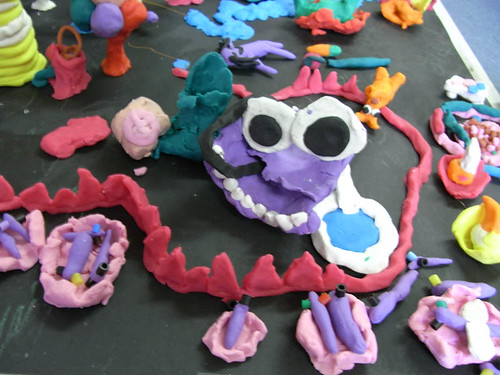
Benjamin, the only boy, was also the only one to build a public object, an amusement park.
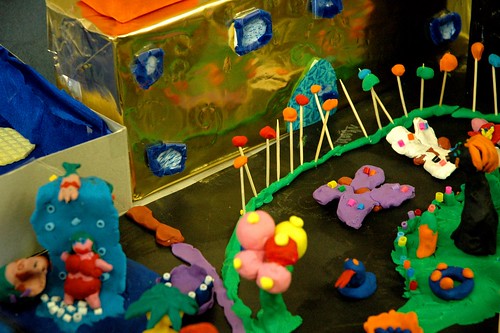
When we started to put together the city, I found out that the kids didn’t know, and for the most part were not really interested in, the question of where all our public services come from — where do we get water and electricity, how do we dispose of our garbage, and so on. A child born in a city has always seen things happen “by themselves”. But it is really important to understand that we are all responsible for public services, to keep them running. It is great to know where they come from and to think how to improve them together.
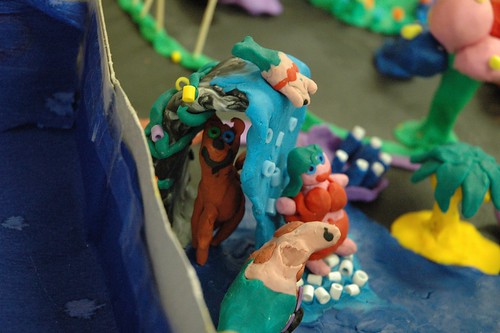
While building our model we had a funny discussion about the water supply for our city. Joanna and Johanna built a waterfall that they put into the public space, but they were not sure until the end that they would let everyone use it. They were thinking that maybe they would invite just friends, or maybe they would sell access to it.
Benjamin built a company that produced bottled water, and he decided that the company would sell water to the citizens. “Otherwise why would they bother to work?” he said. Then we began talking about money. Where we are going to get money to pay for the water? Maybe it is easier just to build a well, so everybody can have free water? The kids agreed.
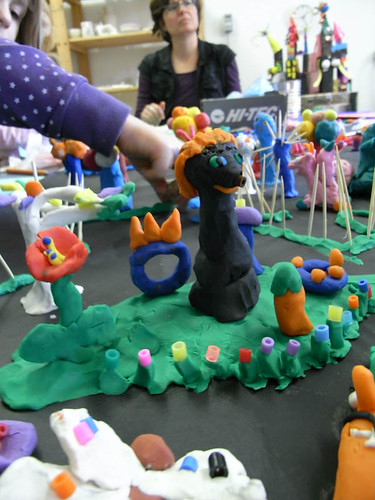
But I am not sure that they really got the idea of the importance of public space and shared responsibilities. Jutta was commenting on this, saying, “Our kids are surrounded by computer games that propose that they sell and buy things for their virtual characters. So it is understandable that they repeated this pattern.”
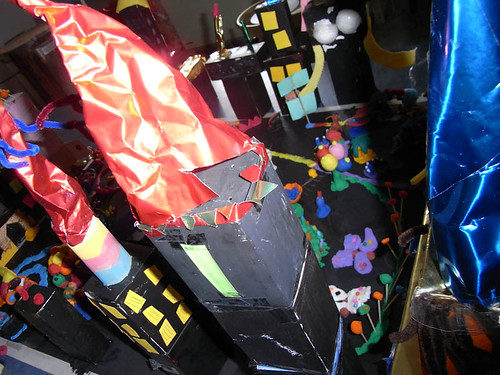
I agree, and I think it will be great to present children with an alternative way of behavior based on cooperation and sharing resources for the benefit of everybody.
It will be great to have one more opportunity to work with the kids. Maybe the next project can be about the history of food? Perhaps we can watch short movies about the history of food habits from ancient times until now: industrial food production, fast food and slow food movements. We might draw plans for a community garden and create a new series of books describing it. Modeling clay (plasticene) is a great material to build together a community restaurant with all kinds of imaginary and “real” food meals that kids know themselves or that they will have learned about in the class.



